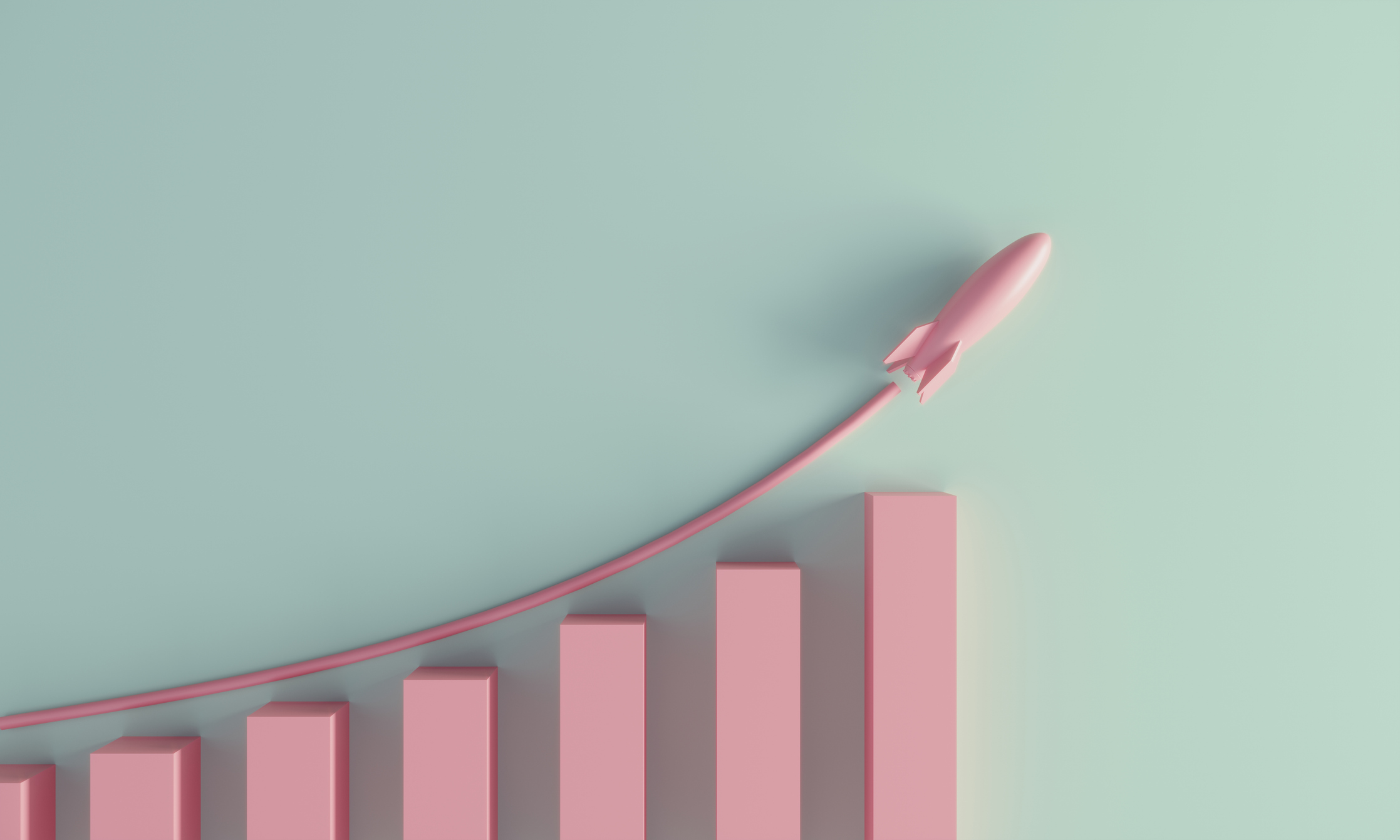Types of Bond Fund Yields and What They Mean
What’s a 30-day SEC yield? A trailing 12-month yield? A yield to maturity? We explain what each measure says about an income fund.


Now that bonds offer decent yields, investors have been barreling into fixed-income mutual and exchange-traded funds. Taxable bond funds and ETFs pulled in net inflows (the sum of money deposited minus money that’s withdrawn) of $143 billion over the first three months of 2024, a near-record.
But the array of bond fund yields can be confusing for investors trying to add a fund to their portfolio. In late March, for instance, the Schwab 1-5 Year Corporate Bond ETF (symbol SCHJ) boasted a 30-day SEC yield of 5.11%, a trailing 12- month or distribution yield of 3.16%, and a 5.28% yield to maturity. “If you look at all three, they can help create an overall picture of a bond fund,” says D.J. Tierney, a senior investment portfolio strategist at Charles Schwab Asset Management.
Note that a bond fund’s yield is just one piece of the puzzle when you’re considering an investment in the fund. Investors should also understand the fund’s investment objective, fees and expenses, overall credit quality, potential risk of default on debt, and sensitivity to interest rates.
From just $107.88 $24.99 for Kiplinger Personal Finance
Become a smarter, better informed investor. Subscribe from just $107.88 $24.99, plus get up to 4 Special Issues

Sign up for Kiplinger’s Free Newsletters
Profit and prosper with the best of expert advice on investing, taxes, retirement, personal finance and more - straight to your e-mail.
Profit and prosper with the best of expert advice - straight to your e-mail.
And be careful about confusing yield with income, says Tierney. Income is the coupon rate a bond pays — it’s the annual interest paid on a bond, and it is generally fixed throughout a bond’s life span. A bond’s yield, on the other hand, can be an indicator of the return an investor may receive each year over the life of a bond held to maturity, relative to the price of the bond. (Bond prices and yields move in opposite directions.)
For example, a five-year Treasury note that matures in January 2029 pays a coupon rate of 1.75%. That’s the income, expressed as a percentage of the face value of the bond, you can expect to receive per year. But in late April, the bond yielded 4.74%, reflecting the expected return on your investment over the life of the bond, says Tierney, including interest payments and principal you may expect to receive when it matures, relative to the market price of the bond.
That said, investors should think of a fund’s yield as “a starting point” when it comes to forecasting a total return, says Warren Pierson, co-chief investment officer of Baird Funds. It’s no guarantee. “A lot can go wrong before a yield turns into total return,” says Pierson. Use this guide to help you demystify bond yields and choose the right fund for your needs.
30-day SEC yield
The Securities and Exchange Commission created the standardized calculation for the SEC yield, sometimes called the 30-day yield or current yield, to allow investors to compare one bond fund to another. Some even refer to it as the standardized yield.
“If you’re comparing two different funds, this is the yield to look at first,” says Pierson (and it’s the yield cited most often in Kiplinger). Be wary if one fund sports a yield that’s measurably higher than that of a similar fund. “Rest assured there’s some additional risk,” he says. “You might not be able to determine what the risk is, but it’s there.”
The calculation shows investors what they would earn, after expenses, over a 12-month period if the fund continued earning the same yield for the rest of the year. It annualizes the income distributed over the past 30 days and divides it by the fund’s net asset value at the end of the 30-day period. All SEC yields are net of expenses. A subsidized 30-day yield reflects fee waivers and/or expense reimbursements during the period; an unsubsidized figure does not adjust for waivers or reimbursements. (Some funds don’t have waivers. In those cases, unsubsidized and subsidized 30-day yields will be the same.)
But there are caveats. The SEC yield is backward-looking — by 30 days, to be exact. What’s more, fund companies are not even required to disclose yield, but when they do, they must use the SEC-yield calculation. As a result, some bond funds disclose their 30-day yields only quarterly or monthly; others update them daily. It pays to be mindful of the “as of” date when you compare the SEC yields of funds.
Trailing 12-month yield (TTM yield)

Also called the distribution yield, a trailing 12-month yield is the ratio of the sum of all fund distributions over the past 12 months to the fund’s net asset value at the end of the period.
The one-year look-back makes the distribution yield even more backward-looking than the 30-day SEC yield. As a result, during periods of dramatic interest rate shifts, the trailing 12-month yield can be misleading, says Tierney. “The first question investors should ask is, are we in a stable rate environment, or is it changing?”
Moreover, the actual distribution-yield calculation is not standardized and thus may vary depending on the fund issuer.
Yield to maturity (YTM)
The yield to maturity of a single bond is the overall annual interest rate you will earn if you buy the IOU and hold it to maturity.
But bond funds hold dozens if not hundreds or thousands of bonds, all with different maturity dates. So it’s not a calculation that all fund firms provide. Vanguard does, however. In late April, Vanguard Short-Term Investment-Grade had a yield to maturity of 5.4%. And Charles Schwab Asset Management (not to be confused with the online broker) provides it for its mutual funds and ETFs.
Fidelity and Pimco, on the other hand, do not. Instead, you might see an “average maturity” or “effective maturity” for the fund, listed in years. That’s the average length of time until securities held by a fund reach maturity and are repaid.
That stat might reveal more about interest rate sensitivity than it does about the fund’s yield, however. The longer a fund’s average maturity, the more the fund’s share price will move up or down in response to changes in interest rates.
Yield to worst (YTW)
Some bonds, such as municipal, mortgage and certain corporate bonds, are callable, meaning they can be “called in” and paid off early by the issuer before their maturity date. “You might have a bond with 10 years to maturity, but it’s callable in five years,” says Duane McAllister, senior portfolio manager at Baird Funds.
Calling in a bond early can be a good tactical move for issuers; it cleans up a firm’s balance sheet, for starters. A yield to worst, then, is the lowest yield an investor can expect on a callable bond — call it a worst-case-scenario yield.
Unfortunately, not all bond fund websites cite a yield to worst. But some do, including Baird. In late April, for instance, the Baird Aggregate Bond fund sported a portfolio average yield to worst of 5.08%. Says Baird’s McAllister, “That’s the worst- case scenario, but sometimes it works out to be better than that.”
Note: This item first appeared in Kiplinger Personal Finance Magazine, a monthly, trustworthy source of advice and guidance. Subscribe to help you make more money and keep more of the money you make here.
Related Content
Profit and prosper with the best of Kiplinger's advice on investing, taxes, retirement, personal finance and much more. Delivered daily. Enter your email in the box and click Sign Me Up.

Nellie joined Kiplinger in August 2011 after a seven-year stint in Hong Kong. There, she worked for the Wall Street Journal Asia, where as lifestyle editor, she launched and edited Scene Asia, an online guide to food, wine, entertainment and the arts in Asia. Prior to that, she was an editor at Weekend Journal, the Friday lifestyle section of the Wall Street Journal Asia. Kiplinger isn't Nellie's first foray into personal finance: She has also worked at SmartMoney (rising from fact-checker to senior writer), and she was a senior editor at Money.
-
 My Top 10 Stock Picks for 2026
My Top 10 Stock Picks for 2026Each year, we ask an expert to pick 10 stocks that have the potential to beat the market over the next 12 months. Here are his choices for 2026.
-
 Special Report: The Future of American Politics
Special Report: The Future of American PoliticsThe Kiplinger Letter The Political Trends and Challenges that Will Define the Next Decade
-
 We're Still Bullish on Stocks
We're Still Bullish on StocksWe're still bullish on stocks for 2026, but now is the time for investors to pull in their horns and dial down risk.
-
 My Top 10 Stock Picks for 2026
My Top 10 Stock Picks for 2026Each year, we ask an expert to pick 10 stocks that have the potential to beat the market over the next 12 months. Here are his choices for 2026.
-
 We're Still Bullish on Stocks
We're Still Bullish on StocksWe're still bullish on stocks for 2026, but now is the time for investors to pull in their horns and dial down risk.
-
 These Were the Hottest S&P 500 Stocks of the Year
These Were the Hottest S&P 500 Stocks of the YearAI winners lead the list of the S&P 500's top 25 stocks of 2025, but some of the names might surprise you.
-
 Stocks That Could Take Off in the New Year
Stocks That Could Take Off in the New YearThere are three areas of potential in the 2026 stock market.
-
 Now That You've Built Your Estate Planning Playbook, It's Time to Put It to Work
Now That You've Built Your Estate Planning Playbook, It's Time to Put It to WorkYou need to share details with your family (including passwords and document locations) and stay focused on keeping your plan up to date.
-
 I'm a Wealth Adviser: These 10 Strategies Can Help Women Prepare for Their Impending Financial Power
I'm a Wealth Adviser: These 10 Strategies Can Help Women Prepare for Their Impending Financial PowerAs women gain wealth and influence, being proactive about financial planning is essential to address longevity and close gaps in confidence and caregiving.
-
 I'm a Financial Planning Pro: This Is How You Can Stop These 5 Risks From Wrecking Your Retirement
I'm a Financial Planning Pro: This Is How You Can Stop These 5 Risks From Wrecking Your RetirementYour retirement could be jeopardized if you ignore the risks you'll face later in life. From inflation to market volatility, here's what to prepare for.
-
 Are You Hesitating to Spend Money You've Spent Years Saving? Here's How to Get Over It, From a Financial Adviser
Are You Hesitating to Spend Money You've Spent Years Saving? Here's How to Get Over It, From a Financial AdviserEven when your financial plan says you're ready for a big move, it's normal to hesitate — but haven't you earned the right to trust your plan (and yourself)?